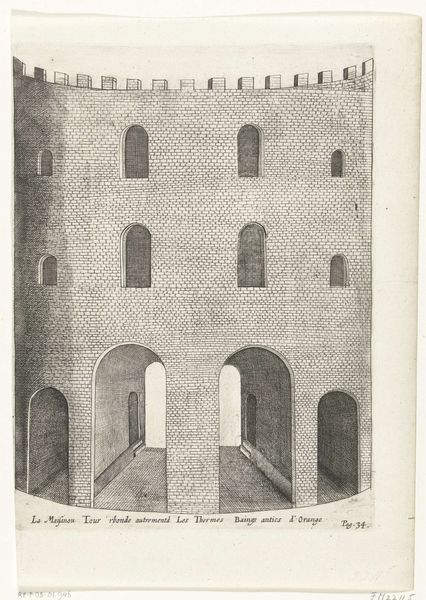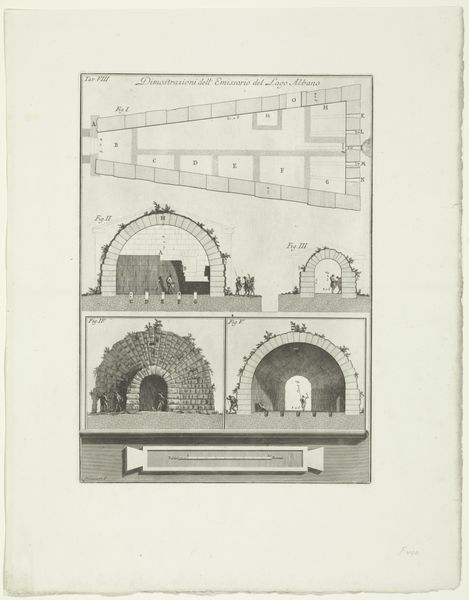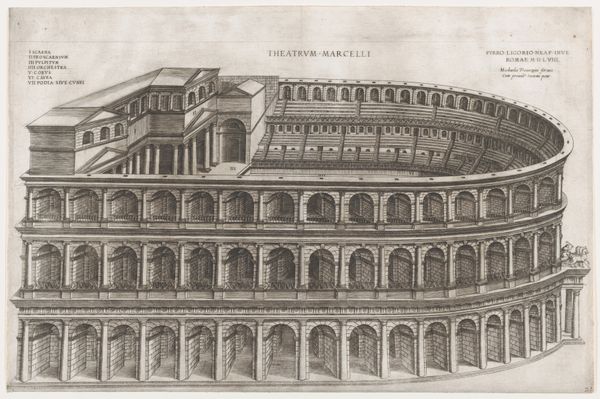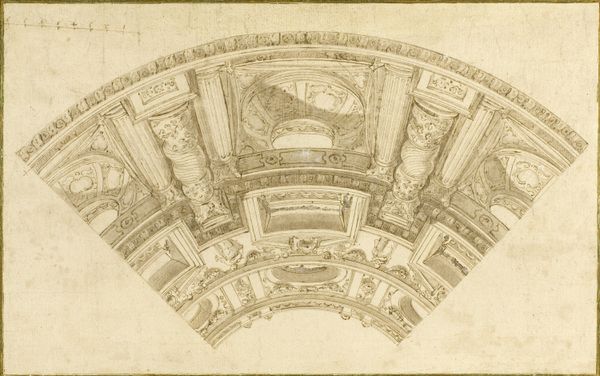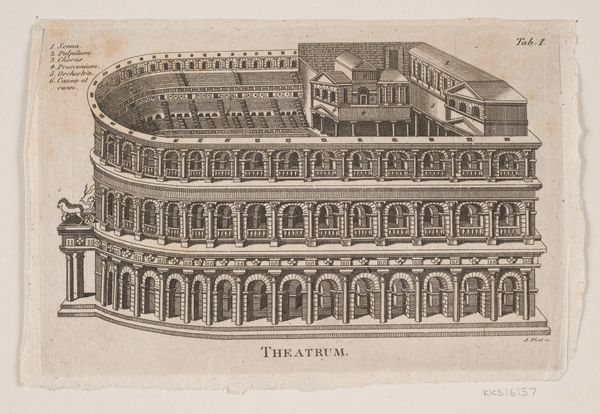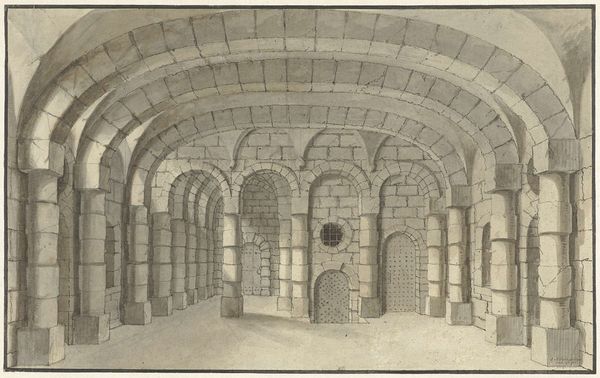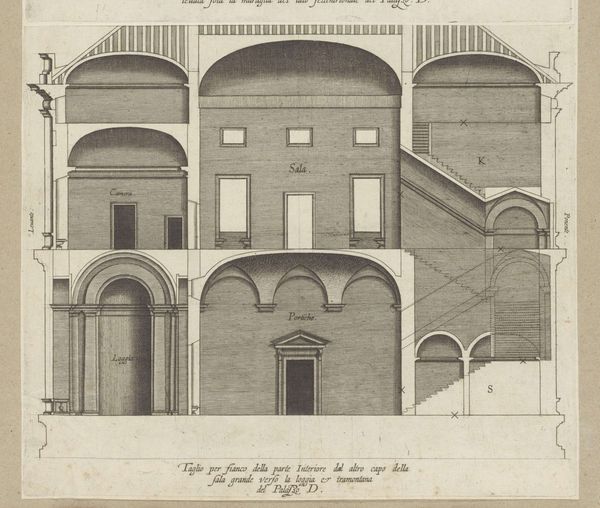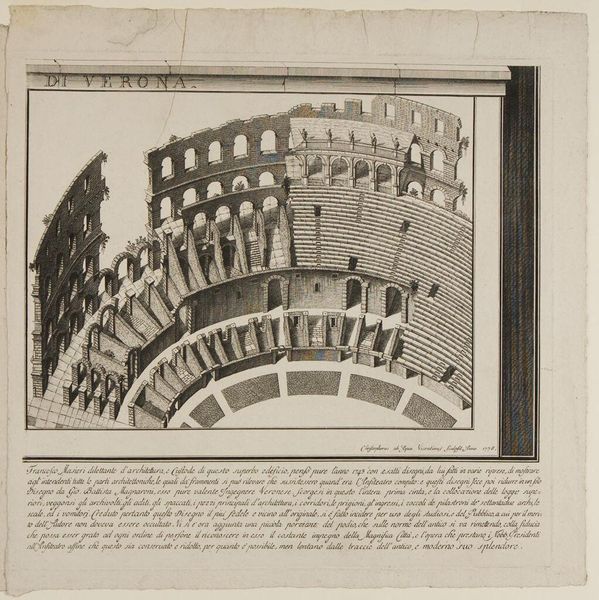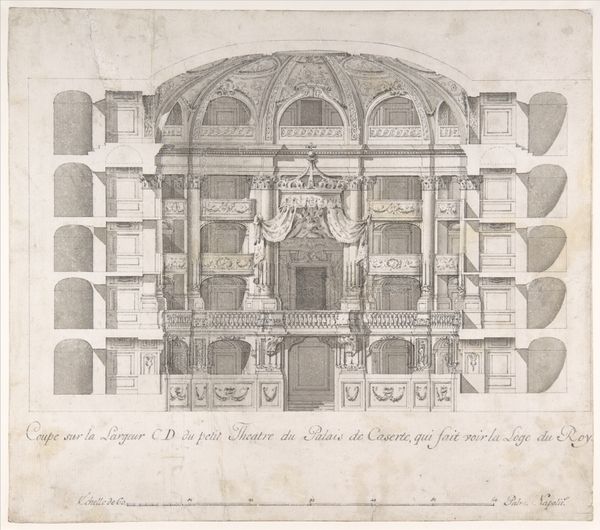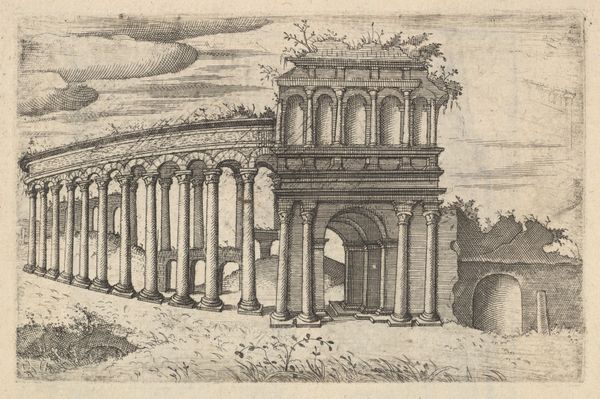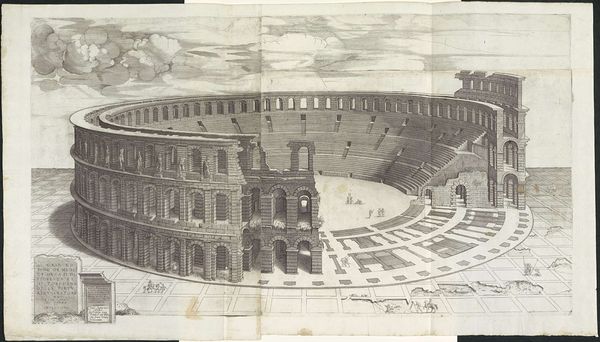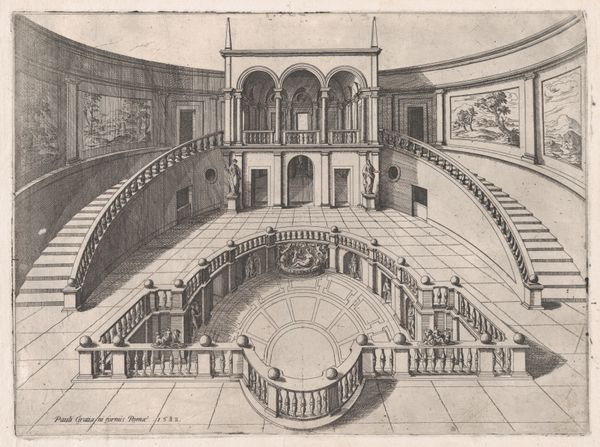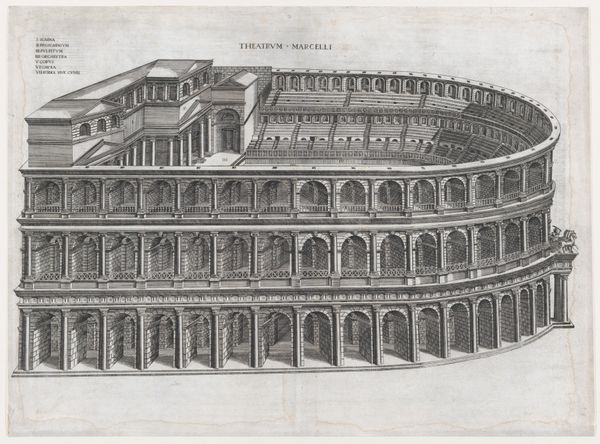
print, engraving, architecture
# print
#
ancient-mediterranean
#
engraving
#
architecture
Dimensions: height 191 mm, width 270 mm
Copyright: Rijks Museum: Open Domain
Curator: Here we have J. Baugin’s engraving from around 1639, entitled "Reconstructie van de Romeinse arena in Orange," depicting precisely that: a reconstructed Roman arena. Editor: It feels desolate, doesn't it? I mean, there are figures engaged in combat, but the vast emptiness and rigid structure overshadow them completely. Makes me think about power structures, almost like tiny figures trapped within a wheel. Curator: Absolutely. Baugin created this during a time of intense interest in classical antiquity. This image is less about faithful representation and more about reclaiming and showcasing Roman architectural prowess to a 17th-century audience. Orange, in Southern France, was known for its well-preserved Roman ruins, making it an important site of historical interest. Editor: Funny, how ruins become these picturesque ghosts for later generations to romanticize, forgetting, or maybe conveniently ignoring, that there's real history buried, often quite brutally, beneath the stones. Look how the walls confine the gladiators, dwarfing them completely! I guess the engraving isn’t only about reconstruction but also interpretation, right? It subtly alters perspectives, emphasizes elements, omits details, which influences how its contemporary viewers felt about the space and by extension, Roman imperial authority. Curator: Precisely! Prints like this played a key role in disseminating knowledge and shaping perceptions of antiquity. The artist is crafting an idea as much as an image, emphasizing the monumentality of Roman architecture and its lasting legacy. In a sense, the engraving serves a propagandistic function. Editor: Yes! And for me, it is also about that tension: ruins, reconstructions and imagination. This empty arena and its staged scene evoke the echo of violence more intensely than if there had been people thronging around them. Perhaps what we perceive, interpret, imagine, is what we are really seeing when looking at a piece like this. Curator: Very well said. It is a layered image; Baugin’s print reveals how we actively engage with history. Editor: For sure. Making old stories resonate, or warning us perhaps? It is amazing how much a silent image can say.
Comments
No comments
Be the first to comment and join the conversation on the ultimate creative platform.
